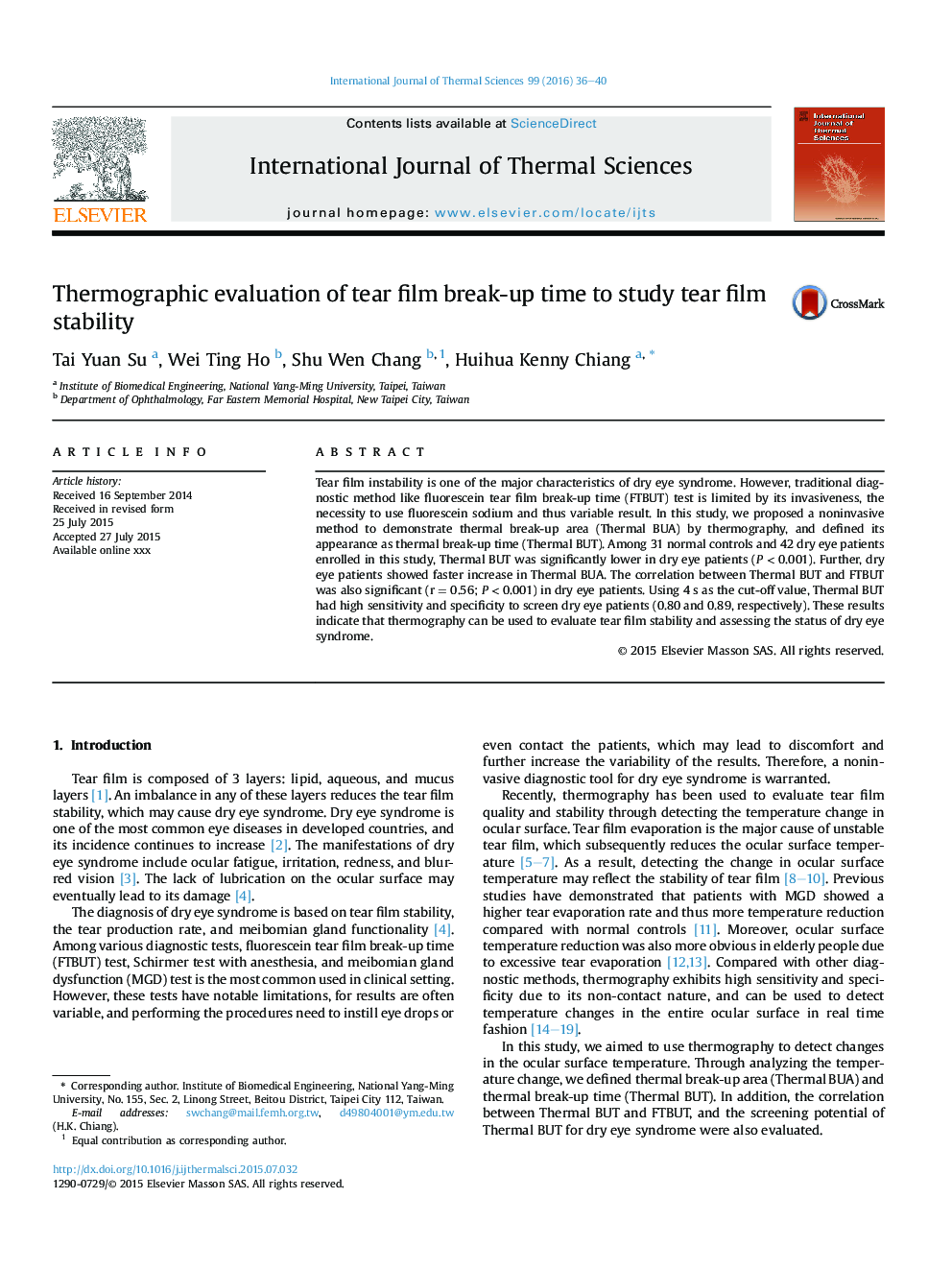| Article ID | Journal | Published Year | Pages | File Type |
|---|---|---|---|---|
| 669224 | International Journal of Thermal Sciences | 2016 | 5 Pages |
Abstract
Tear film instability is one of the major characteristics of dry eye syndrome. However, traditional diagnostic method like fluorescein tear film break-up time (FTBUT) test is limited by its invasiveness, the necessity to use fluorescein sodium and thus variable result. In this study, we proposed a noninvasive method to demonstrate thermal break-up area (Thermal BUA) by thermography, and defined its appearance as thermal break-up time (Thermal BUT). Among 31 normal controls and 42 dry eye patients enrolled in this study, Thermal BUT was significantly lower in dry eye patients (P < 0.001). Further, dry eye patients showed faster increase in Thermal BUA. The correlation between Thermal BUT and FTBUT was also significant (r = 0.56; P < 0.001) in dry eye patients. Using 4 s as the cut-off value, Thermal BUT had high sensitivity and specificity to screen dry eye patients (0.80 and 0.89, respectively). These results indicate that thermography can be used to evaluate tear film stability and assessing the status of dry eye syndrome.
Related Topics
Physical Sciences and Engineering
Chemical Engineering
Fluid Flow and Transfer Processes
Authors
Tai Yuan Su, Wei Ting Ho, Shu Wen Chang, Huihua Kenny Chiang,
